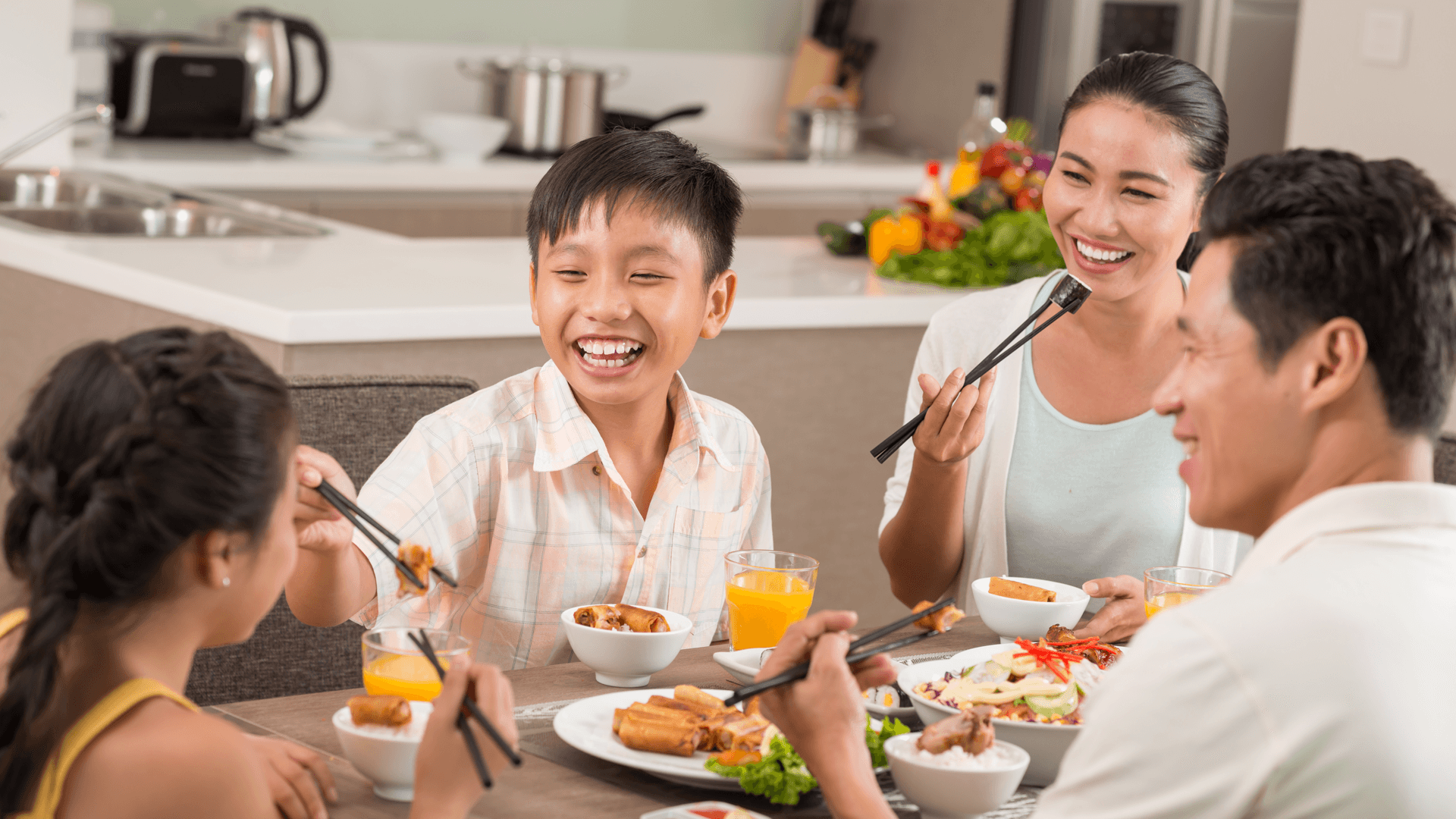
Photo: Collected
Vietnam food culture is characterized by rice, fish sauce, snacks and regional diversity.
If you live in one of the multicultural cities such as Toronto, Los Angeles, London or Paris, you will probably have some idea what Vietnam cuisine is like. The country boasts one of the most diverse, delicious and healthy gastronomy in the world. The main ingredients used in Vietnamese food are rice and its derivatives, fish sauce and vegetables.
Thanks to Vietnam´s tropical climate, the long coast and the gigantic range of mountains, Vietnam is blessed with numerous varieties of plants. You will be pleasantly surprised by the amount of fruits and vegetables produced and consumed daily in the country.
A visit to a Vietnamese restaurant abroad will probably spark some light: you are most likely to be served a plate of fresh herbs before anything else.
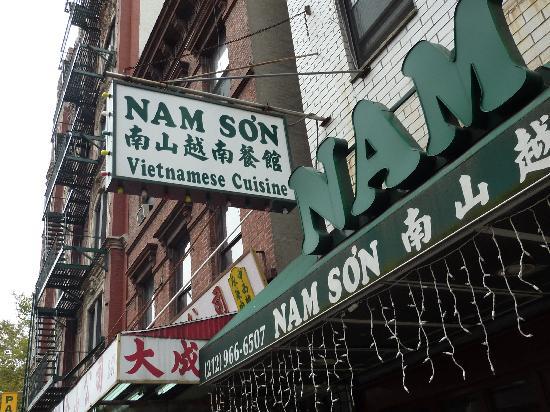
Nam Son at 245 Grand Street (Bowery, NYC) is among many famous overseas Vietnamese restaurants
A typical rice-based culture
Vietnamese sometimes wonder how westerners can eat bread day after day but the vice-versa also holds water. Most tourists coming to Vietnam are amazed at the omni-presence of rice and rice-related dishes.
Rice Production
Rice continues to be the most important component of agriculture and food scene.
Rice is an object for worship in many temples of Vietnam. It is said to originate from the Mother Goddess Worshiping, the most long–standing belief in Vietnam. Yes, rice is a big thing out here. The very first written characters constituting the word “Happiness' in ancient Vietnamese is the image of many rice plants and a square symbolizing a paddy field. Rice is not only happiness, it really forms Vietnamese.
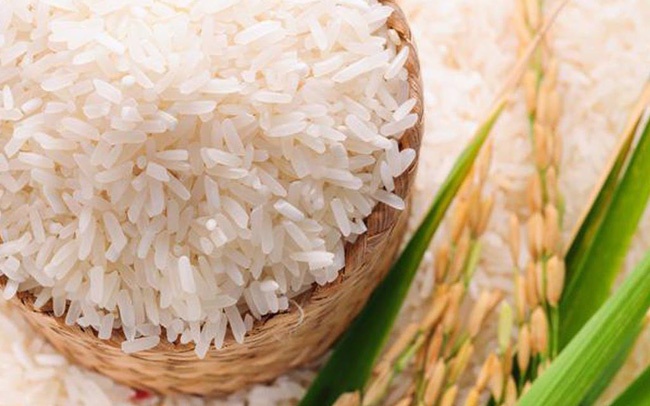
Photo by vietnambiz.vn
Accordingly, many main dishes and snacks in Vietnam are made from rice: boiled rice in daily meals, rice porridge, steamed rice, glutinous rice cake, well-known Banh Chung (square cake) and uncountable made-from-rice dishes from every region in Vietnam.
Even the universal Pho that you definitely hear about is made from rice as well. Rice is the center of everything, like a sun lying in the center of the whole solar planet.
Considering rice important, Vietnamese have been always developing their farming method and new rice genres. Many Vietnam rice varieties exported to all over the world are renowned for their distinctive flavor, yet only when coming to Vietnam and having boiled rice with soya sauce pickled egg-plants, your adventure to Vietnam is considered perfect.
Vietnamese Rice
A Bowl of Rice if a must for all lunches and dinners.
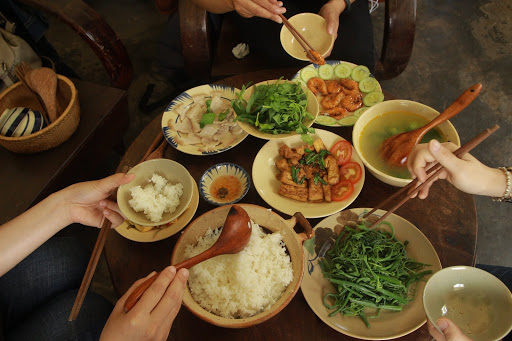
Photo by baovanhoa.vn
If you believe the way people eat forms their society, you must feel excited to learn about the fish sauce in every Vietnamese meal. You often finish your meal portion in silence without putting your fork into others’? There are no transparent meal portions among Vietnam family members in a meal and they must think thoughtfully how much they should eat since all the food together is put in a tray.
Vietnam Fish Sauce
In the center of the tray, there goes the renowned fish sauce bowl which is used by all the eaters and supposed to form Vietnamese characteristics. Some say that the common fish sauce bowl represents Vietnamese solidarity, yet some others say the bowl is the root of many bad personalities such as jealousy and embezzlement.
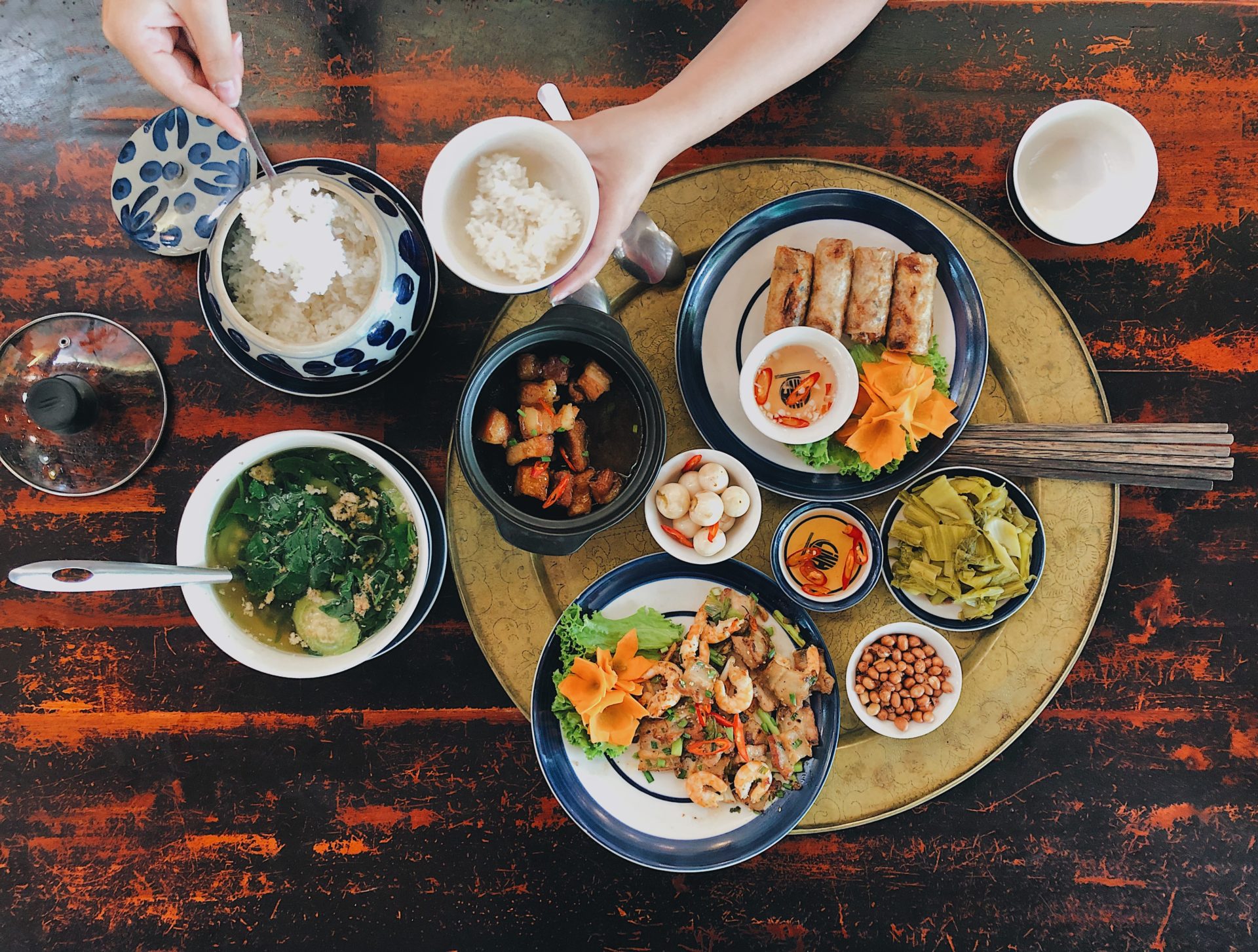
Photo by daubepgiadinh.vn
Whatever it is, there is one thing for sure that fish sauce contributes to a great cultural feature in Vietnamese food. Vietnam is known as a wet rice farming country, animal breeding was not well developed and people mainly live on vegetable and aquatic things such as shrimp, fish and snail. As a result, boiled dishes are the most popular, and fish sauce is a certain demand.
Now, Vietnamese has a hundred kinds of sauce, applied for different dishes and different regions and four different seasons.
Snack paradise to venture into
Vietnam peasants used to have a lot of free time after the busy crop time passed, and preparing some nosh to eat is a certain result of the circumstance. Sweet potato is a prime example for the case. It is considered the most popular nosh in the countryside. Ever experienced Vietnam home-staying? You must realize boiled sweet potato, cassava and peanuts are the most typically Vietnamese snack - of course without salt or sugar added.
Vietnam Snacks often come in non-package no sugar or salt added form.
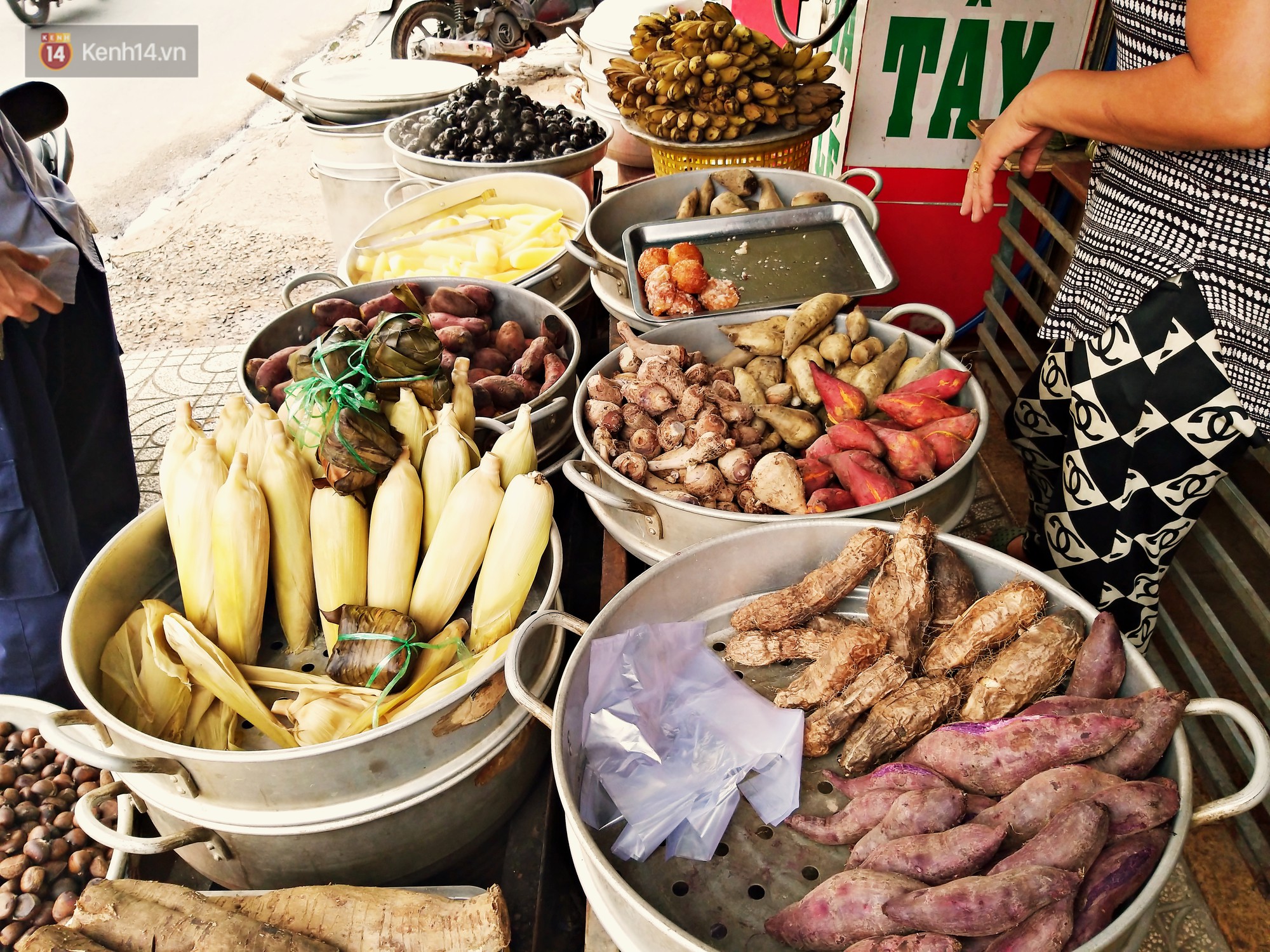
Photo by kenh14.vn
And if you dare venture beyond the standard ones, there are surely bizarre things to try. The best place to taste purely Vietnamese snacks is to have them right in a family or on the sidewalks along every street. Tasting a fertilized egg at 4pm in a breezy afternoon may scare you, yet it is one of the most popular snacks out here and is considered extremely nutritious.
Besides varieties of wonderful noodles, made-of-rice cakes, bean sweet soups you may be too shy to eat a bowl of pig raw blood soups. Does it originate from Totem belief? Not many Vietnamese questions when eating the dish. All they want to do is to choose the right restaurant and wait to be served the raw blood soups with Vietnamese spirit.
Of unity and diversity
If there is anything to conclude about Vietnamese food, it can only be the "unpredictable diversity". Each region- North, Central and South has something to be proud of. The influence of Chinese and French culture during colonial times adds more to the vibrant scenes of gastronomy. It is hard to describe and compare the specific features of cuisines from each region as there is more than a capital of food in Vietnam. While Hanoi offers some authentic and original food experience, Hue boasts about its royal trait and Ho Chi Minh City is proud that it is the most inclusive place when it comes to dining. You will have to discover it yourself and decide which one you like the most!
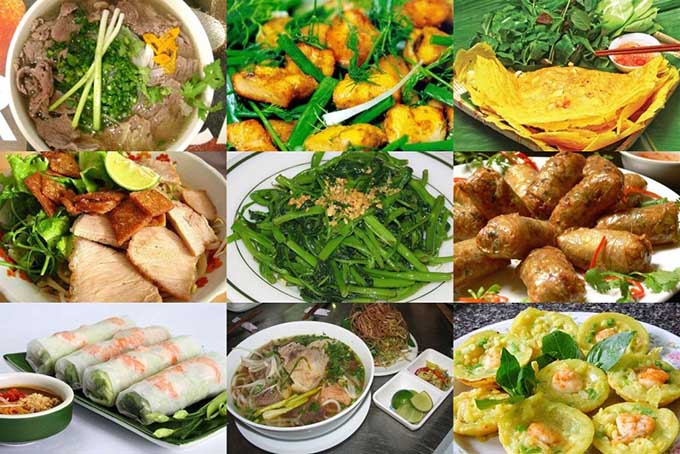
Photo by beptruong.vn
Sprout and Herbs
You know it is Pho South when your noodle is accompanied with bean sprout and Thai basil.
Different from the toast-butter-jam-cereal culture, breakfasts in Vietnam come in a variety of dishes, from noodle to rice to baguette. A famous and common dish is ¨Pho¨, while you can open your horizon of food knowledge by trying ¨banh cuon¨, ¨xoi xeo¨, ¨chao suon¨… For lunch and dinner, people have rice with a vegetable broth and some types of second dish. These include tofu, chicken, pork, beef or potatoes! This is where regional difference comes into play, with various types of processing and adding spice to food.
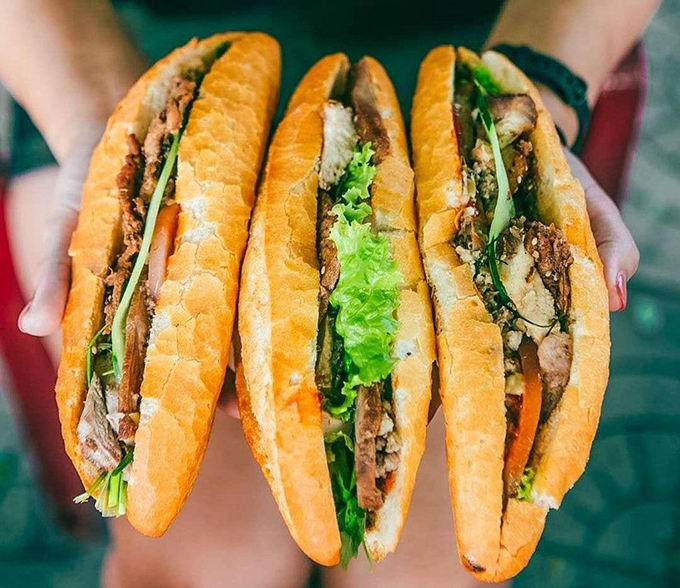
Photo by ngoisao.net
Besides local dishes, you are likely to run into many international food scenes in big cities. In Hanoi and Ho Chi Minh City, Indian, Japanese, Korean, Spanish, Greek and Chinese food can be found in touristic areas. Pizza and pasta are getting there, though only certain classes have access to this relatively expensive dish (compared with local food choice). Fast food chains are scantier than most other countries in the world: you may be disappointed as there is no Mc Donald. KFC is spreading and so is Pizza Hut. Nonetheless, what is the point of coming half way through the earth to have a bite of burger?
Source: Vietnam Online